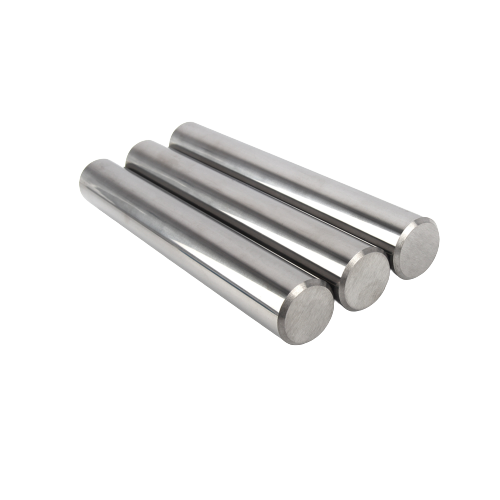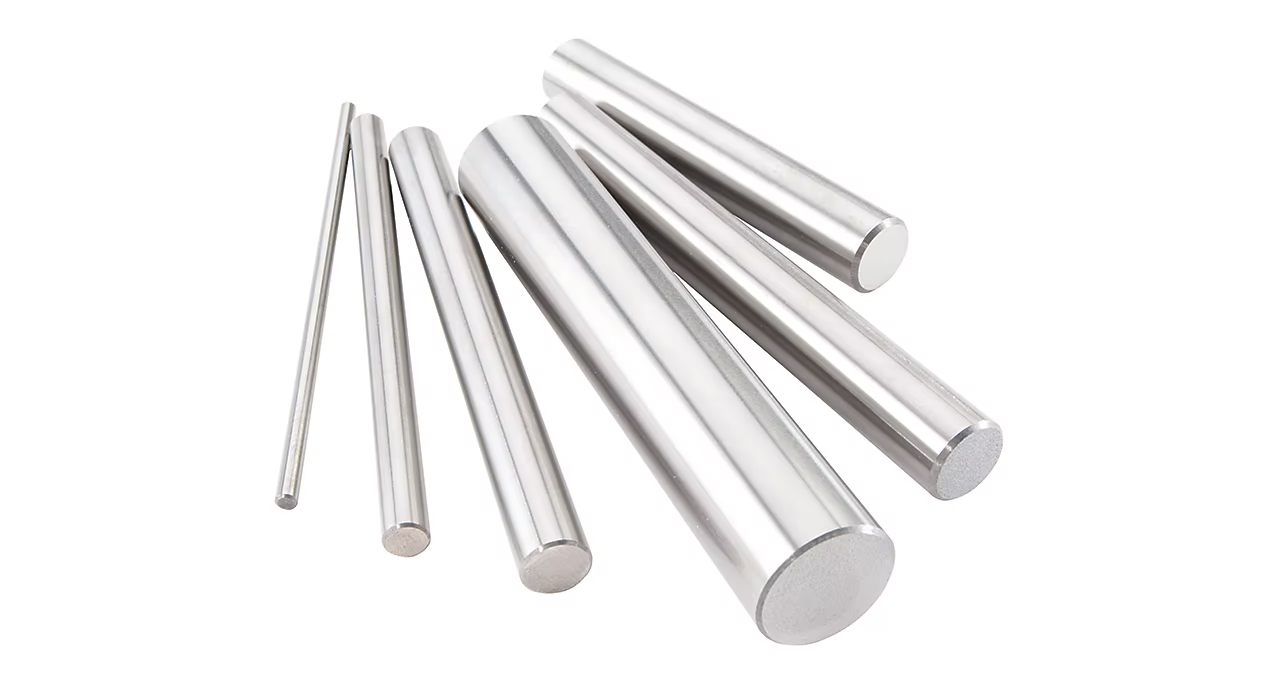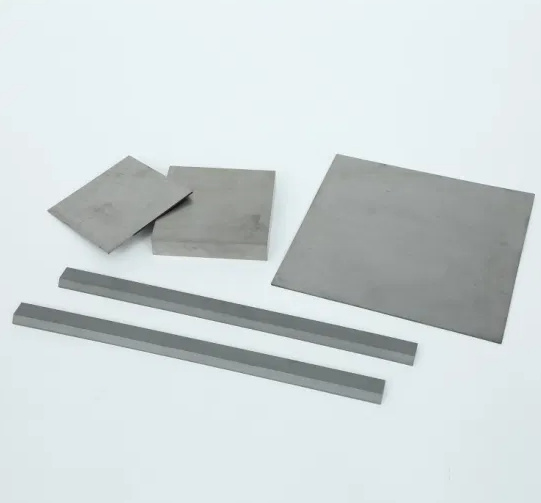Carbide strips are essential components in various industries, providing unmatched durability and precision. This guide will explore everything you need to know about carbide strips suppliers, from the types and applications to material properties and how to choose the right supplier. Let’s dive in!
Aperçu des bandes de carbure
Carbide strips are used in various applications due to their hardness and wear resistance. They’re made from a composite material called cemented carbide, which combines tungsten carbide particles with a metallic binder. This makes them ideal for cutting tools, wear parts, and industrial machinery.
Détails clés :
- Composition : Typically made from tungsten carbide and cobalt.
- Applications : Cutting tools, wear parts, industrial machinery, and more.
- Propriétés : Dureté élevée, excellente résistance à l'usure et bonne ténacité.
Types de bandes de carbure
Carbide strips come in various types, each suited for specific applications. Here’s a comprehensive table showcasing the different types of carbide strips:
| Type | Description | Applications courantes |
|---|---|---|
| Bandes de carbure de tungstène | High hardness and wear resistance, used in high-stress environments. | Cutting tools, mining equipment |
| Cobalt-Bonded Carbide | Improved toughness and durability, ideal for impact-resistant applications. | Metal forming, drilling tools |
| Bandes de carbure de titane | High-temperature stability, suitable for extreme conditions. | Aérospatiale, composants automobiles |
| Bandes de carbure de vanadium | Excellent abrasion resistance, used in high-wear applications. | Machines industrielles, outils de coupe |
| Chromium Carbide Strips | Superior corrosion resistance, ideal for harsh environments. | Chemical processing, oil and gas |
| Niobium Carbide Strips | High strength and thermal conductivity, used in specialized applications. | Electronic components, aerospace |
| Silicon Carbide Strips | Exceptional hardness and thermal stability, suitable for high-temperature applications. | Semiconductor manufacturing, ceramics |
| Tantalum Carbide Strips | Excellent hardness and chemical resistance, used in high-performance applications. | Nuclear reactors, aerospace |
| Molybdenum Carbide Strips | Good thermal stability and strength, used in specific industrial applications. | Petrochemical, metal processing |
| Hafnium Carbide Strips | High melting point and strength, suitable for extreme temperature conditions. | Spacecraft, high-temperature furnaces |
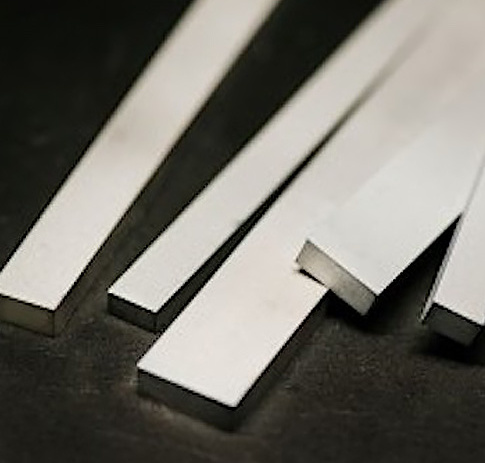
Applications des bandes de carbure
Carbide strips are versatile and used in a variety of industries. Here’s a table detailing their common applications:
| Application | L'industrie | Avantages |
|---|---|---|
| Outils de coupe | Fabrication | High precision, durability, and long tool life |
| Pièces d'usure | Exploitation minière | Resistance to abrasion and wear |
| Machines industrielles | Ingénierie générale | Enhanced machine performance and longevity |
| Formage des métaux | Travail des métaux | Improved tool strength and wear resistance |
| Composants aérospatiaux | Aérospatiale | High-temperature stability and strength |
| Traitement chimique | Industrie chimique | Corrosion resistance and durability |
| Oil and Gas Equipment | Pétrole et gaz | Resistance to harsh environments and wear |
| Semiconductor Manufacturing | Électronique | High thermal stability and precision |
| Automotive Components | Automobile | Enhanced durability and performance |
| Réacteurs nucléaires | Nuclear Energy | High strength and chemical resistance |
Propriétés des matériaux des bandes de carbure
Understanding the material properties of carbide strips is crucial for selecting the right type for your application. Here’s a table summarizing the key properties:
| Propriété | Description |
|---|---|
| Dureté | Measures the strip’s resistance to deformation and wear. |
| Solidité | Indicates the material’s ability to absorb energy and resist cracking. |
| Résistance à l'usure | Describes the strip’s ability to withstand abrasive forces and maintain performance over time. |
| Stabilité thermique | Ability to maintain performance at high temperatures. |
| Résistance à la corrosion | Describes the material’s resistance to chemical and environmental degradation. |
| La force | Measures the strip’s ability to withstand mechanical forces. |
| Densité | Indicates the mass per unit volume of the material. |
| Conductivité thermique | Describes the material’s ability to conduct heat. |
Composition, Properties, and Characteristics of Carbide Strips
Different carbide strips have unique compositions and properties. Here’s a detailed table:
| Type | Composition | Dureté | Solidité | Résistance à l'usure | Stabilité thermique | Résistance à la corrosion |
|---|---|---|---|---|---|---|
| Carbure de tungstène | WC + Co | Très élevé | Haut | Excellent | Bon | Modéré |
| Cobalt-Bonded Carbide | WC + Co | Haut | Très élevé | Bon | Modéré | Faible |
| Carbure de titane | TiC | Haut | Modéré | Bon | Excellent | Modéré |
| Carbure de vanadium | VC | Haut | Modéré | Excellent | Bon | Faible |
| Carbure de chrome | Cr3C2 | Modéré | Haut | Bon | Modéré | Excellent |
| Carbure de niobium | NbC | Haut | Modéré | Bon | Bon | Modéré |
| Carbure de silicium | SiC | Très élevé | Faible | Excellent | Excellent | Modéré |
| Carbure de tantale | TaC | Très élevé | Modéré | Excellent | Bon | Haut |
| Carbure de molybdène | Mo2C | Haut | Haut | Bon | Modéré | Modéré |
| Carbure de hafnium | HfC | Très élevé | Haut | Excellent | Excellent | Haut |

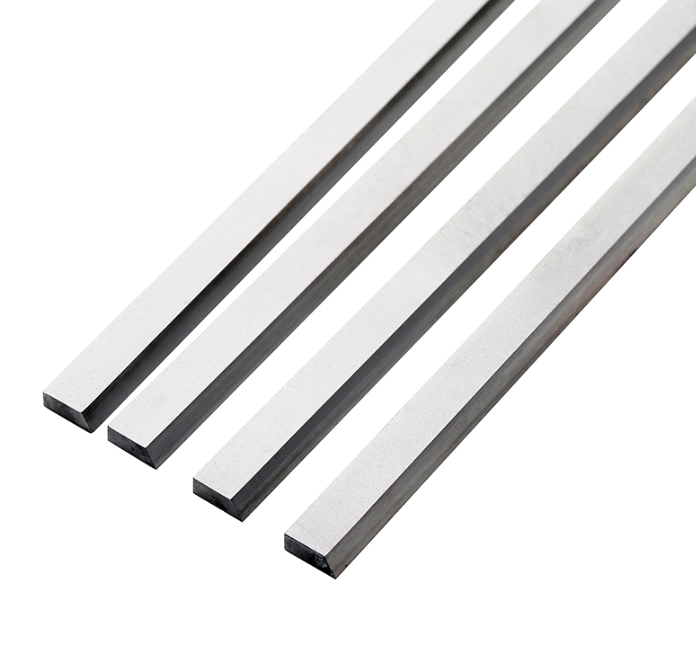
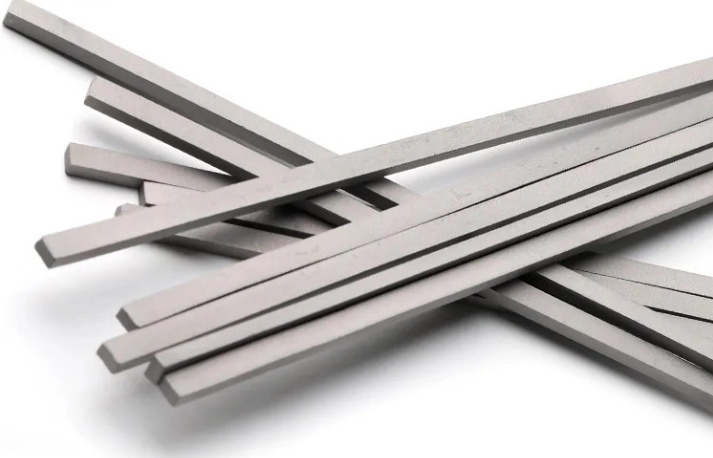

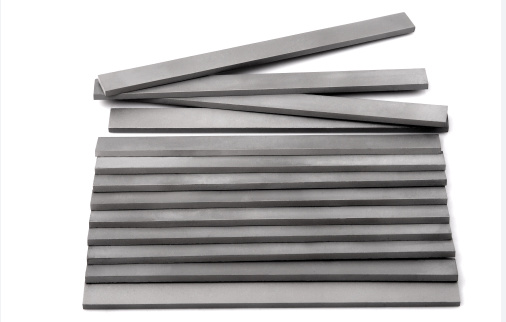
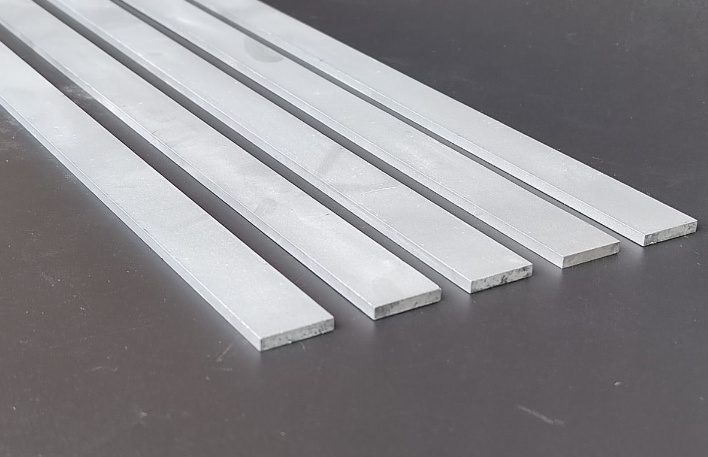
Dureté, solidité et résistance à l'usure
When choosing carbide strips, it’s essential to consider their hardness, strength, and wear resistance. Here’s a comparison table:
| Type | Dureté | La force | Résistance à l'usure |
|---|---|---|---|
| Carbure de tungstène | 1500-2200 HV | Haut | Excellent |
| Cobalt-Bonded Carbide | 1300-1600 HV | Très élevé | Bon |
| Carbure de titane | 1800-2100 HV | Modéré | Bon |
| Carbure de vanadium | 2200-2500 HV | Modéré | Excellent |
| Carbure de chrome | 1600-1800 HV | Haut | Bon |
| Carbure de niobium | 1600-1900 HV | Modéré | Bon |
| Carbure de silicium | 2400-2800 HV | Faible | Excellent |
| Carbure de tantale | 1600-1800 HV | Modéré | Excellent |
| Carbure de molybdène | 1800-2200 HV | Haut | Bon |
| Carbure de hafnium | 2000-2400 HV | Haut | Excellent |
Spécifications, tailles, formes et normes
Carbide strips are available in various specifications, sizes, shapes, and standards. Here’s a detailed table:
| Spécifications | Taille (mm) | Forme | Normes |
|---|---|---|---|
| Tolérance | ±0.05 – ±0.1 | Rectangulaire, Carré | ISO 9001, ASTM, DIN |
| Longueur | 50 – 200 | Flat, Custom | ISO 9001, ASTM, DIN |
| Largeur | 3 – 50 | Flat, Custom | ISO 9001, ASTM, DIN |
| Épaisseur | 1 – 20 | Flat, Custom | ISO 9001, ASTM, DIN |
| Formes personnalisées | Disponible | Sur mesure | ISO 9001, ASTM, DIN |
Fournisseurs et détails des prix
When selecting a carbide strips supplier, consider their reputation, product quality, and pricing. Here’s a comparison of popular suppliers and their pricing details:
| Fournisseur | Localisation | Gamme de produits | Prix (USD) | Avis des clients |
|---|---|---|---|---|
| Fournisseur A | ÉTATS-UNIS | Tungsten, Cobalt | $50 – $100/kg | 4.5/5 |
| Fournisseur B | Allemagne | Titanium, Vanadium | $60 – $120/kg | 4.7/5 |
| Fournisseur C | Chine | Chromium, Niobium | $40 – $90/kg | 4.3/5 |
| Fournisseur D | Japon | Silicon, Tantalum | $70 – $130/kg | 4.6/5 |
| Fournisseur E | Inde | Molybdenum, Hafnium | $50 – $110/kg | 4.4/5 |
How to Select the Right Carbide Strips
Choosing the right carbide strips involves considering various factors such as application, material properties, and supplier reputation. Here’s a table to help you make an informed decision:
| Facteur | Considérations |
|---|---|
| Application | Determine the specific use-case to select the appropriate type of carbide strip. |
| Propriétés des matériaux | Evaluate hardness, toughness, wear resistance, and other properties based on application needs. |
| Réputation du fournisseur | Check customer reviews, industry reputation, and product quality of potential suppliers. |
| Budget | Compare pricing from different suppliers to find the best value for money. |
| Standards and Compliance | Ensure the product meets relevant industry standards and specifications. |
Comparaison des avantages et des limites
Different types of carbide strips have unique advantages and limitations. Here’s a comparative table:
| Type | Avantages | Limites |
|---|---|---|
| Carbure de tungstène | Dureté élevée, excellente résistance à l'usure | Moderate toughness |
| Cobalt-Bonded Carbide | High toughness, good durability | Dureté inférieure à celle des autres types |
| Carbure de titane | High-temperature stability, good wear resistance | Moderate toughness |
| Carbure de vanadium | Excellent wear resistance, high hardness | Moderate toughness |
| Carbure de chrome | Superior corrosion resistance, good wear resistance | Moderate hardness |
| Carbure de niobium | High strength, good wear resistance | Résistance modérée à la corrosion |
| Carbure de silicium | Exceptional hardness, excellent thermal stability | Low toughness |
| Carbure de tantale | Dureté élevée, excellente résistance à l'usure | Coût élevé |
| Carbure de molybdène | Good thermal stability, high strength | Moderate wear resistance |
| Carbure de hafnium | High melting point, excellent wear resistance | Coût élevé |

FAQ
| Question | Réponse |
|---|---|
| À quoi servent les bandes de carbure ? | Carbide strips are used in cutting tools, wear parts, industrial machinery, and various other applications due to their hardness and durability. |
| Comment choisir la bonne bande de carbure ? | Consider the specific application, material properties, supplier reputation, and budget when selecting a carbide strip. |
| What are the main types of carbide strips? | The main types include tungsten carbide, cobalt-bonded carbide, titanium carbide, vanadium carbide, and more. |
| Why is tungsten carbide popular? | Tungsten carbide is popular due to its high hardness, excellent wear resistance, and good overall performance. |
| Quelles sont les industries qui utilisent les bandes de carbure ? | Industries such as manufacturing, mining, aerospace, automotive, and chemical processing use carbide strips. |
| Les bandes de carbure peuvent-elles être personnalisées ? | Yes, many suppliers offer customized shapes and sizes to meet specific application requirements. |
Conclusion
Choosing the right carbide strips supplier is crucial for ensuring the quality and performance of your tools and equipment. By understanding the different types, applications, material properties, and supplier options, you can make an informed decision that meets your specific needs. Whether you’re in manufacturing, mining, aerospace, or any other industry, carbide strips offer unmatched durability and precision to enhance your operations.
For the best results, always consider the specific application, evaluate material properties, and choose a reputable supplier to ensure you get the highest quality carbide strips.

